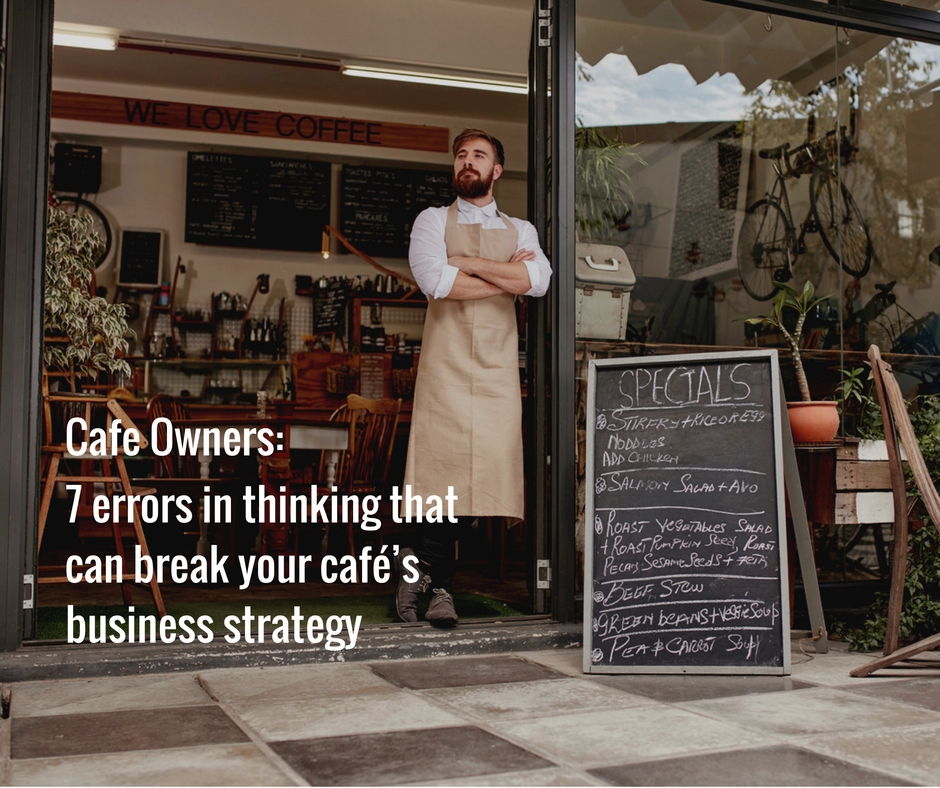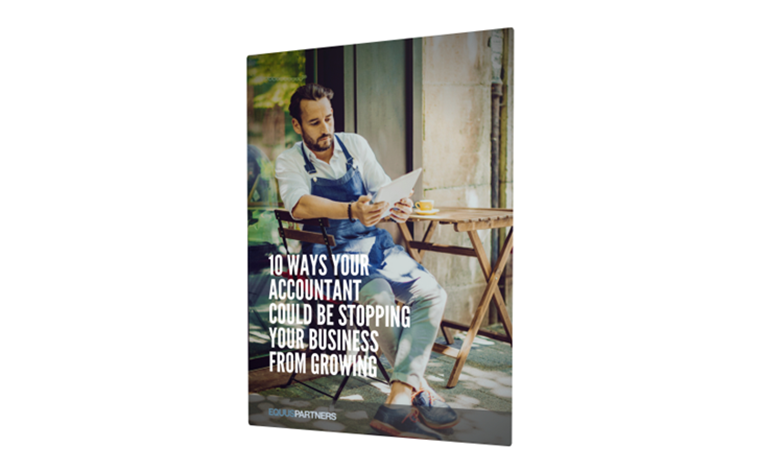
That’s A Wrap!
As we draw to the end of 2016, I wanted to reflect and share some of our achievements and plans for the future with you.
That’s a Wrap
Wow, what a year it has been for the team at Equus. Here’s just a few things that we’re proud of achieving in the last 12 months:
- We’ve made the world a better place by giving 19,250 days of access to life-saving clean water to people in Malawi, 58 days of agricultural training to farmers in Malawi, and 2 goats to a rural families in Kenya to have sustainable income for a year.
- We successfully moved our systems from Office365 and Dropbox to G Suite and AODocs. A big move but it’s working like a charm.
- Our team in the Phillipines grew from 5 to 8 amazing people. Our team continue to make wonderful achievements and our business wouldn’t be where it is today without the drive, ambition and attitude of our great team. Thank you to all of you.
- We systemised almost every one of our operational processes over a 3-month period project called “Steps to Success”. It had been a long time coming and we didn’t know where to start – there were so many processes. We ended up using an application called ScreenSteps to host our online procedures. Our team ran the project and it was a huge success. Moreover, it has paid immediate dividends by helping new team members get familiar with how we do what we do.
- And we kicked the Tax Office’s butt (nicely) a few times. It’s been a good year.
What we’re doing in 2017
Planning like ninjas
Like people, businesses also need goal setting and direction. We all should be taking time in early January to reflect on 2016 and plan for 2017. Personally, it has become a yearly routine to start off a new year with a new journal. I’ll start by writing out my values, life goals, and the top 5 things I want to achieve by the end of the year. I also add a ‘to stop list’ – a list of things I no longer want to do – like bookkeeping (for my own business that is).
For our business, we take a few days to plan the next 12 months and make sure our next quarter’s one page plan is drafted and ready to pitch to the team when we get back to work. We also map out our next quarter’s theme and wildly important goal. If the penny just dropped, take the chance while things are quiet to work on your business. If you need assistance with this, book a Business Strategy Session with your advisor in January and February and start your year off ‘firing on all cylinders’.
Publishing a couple of books
We’re proud to announce that we’ll be launching a couple of insightful books next year. Titled: Count More Beans by Nadi Elias – aimed at helping motivated cafe owners make more profit, have more cash and maximise the value of their cafes; and More Beans Less Grind by Chris Nairn – aimed at helping successful cafe owners extract wealth from their businesses to grow their personal wealth outside of their business. These books will be like nothing out there. If you’re interested in find out more (or getting your hands on a copy once published) get in contact with us.
Getting active
We start next year off with a bang – presenting our profit-enhancing strategies to a group of go-getting cafe entrepreneurs at the Australian Specialty Coffee Association’s Symposium on the Secrets of Specialty – If you’re serious about growing your cafe business, then you don’t want to miss this event. The list of speakers is impressive. Get your tickets here.
Launching our Finance Division – EP Finance
We’ve been busy planning out the development of our new mortgage and finance division – EP Finance. Set to go live by February 2017, we’ll be helping our clients in all areas of obtaining smart and efficient finance, from new loans (home loans and commercial finance), asset finance (cars and equipment) to refinancing existing loans and restructuring debt with the purpose of saving our clients interest costs. More details to come soon.
Website facelift
Our website is going to get a nice little facelift. Stay tuned.

How to eliminate cash flow problems in your café business
Is cash flow (or rather a lack of it) in your café business keeping you awake at night? You’re not the only one. The good news is there’s a way to say “Goodbye” to cash flow problems, and “Hello” to a good night’s sleep. Let me tell you the story about Harry, and how he managed to eliminate cash flow problems in his café.
Harry was a café owner, and a pretty successful one at that. All three of the cafes he owned had great front and back of house teams and receptive management, which meant Harry could focus on developing his product and team, along with distribution and sales.
Harry’s financial dilemmas
But despite all this, Harry still felt he was repeating a lot of the mistakes he was making back when there was just the one café. And the biggest one of all was failing to plan for cash flow surprises. BAS, taxes, salaries and superannuation payments were a never-ending source of stress—not to mention a lot of sleepless nights. And the fact he had a fantastic team of staff and suppliers he didn’t want to let down made him stress even more.
He knew what the problem was. He wasn’t putting any money aside for these future payments. But Harry was reluctant about changing any of his payments, his business structure, or the way he looked at his financials. And his accountant wasn’t much help either, having never suggested changes or prepared any cash flow projections he could rely on.
There was another reason for Harry’s reluctance: he liked seeing the money in his transaction account, and ready access to it. The thought of transferring funds to another account to provide for expenses made him nervous. What would happen if the transaction account ran low?
When Harry met Savvy
Carlos, a friend and fellow café entrepreneur, invited Harry over to his new café (his fifth) for lunch. As they ate, Carlos mentioned that thanks to his adviser he’d never felt so in control of his cash flow.
Intrigued, Harry asked Carlos what this adviser had done for him.
Carlos and his adviser were looking at financial reports that helped Carlos manage his money. His adviser also started forecasting cash flows so Carlos had a ballpark of how much they’d need to pay in GST, PAYG and Superannuation each quarter.
Being able to quickly see how much money they’d need (and when they’d need it) meant they could put money aside each week to cover future commitments. Carlos always knew he’d have enough money in his transaction account to cover everyday expenses, which was comforting. And whenever something came up out of the blue, they would take action together to quickly deal with it.
Seizing the opportunity, Harry asked Carlos for his adviser’s contact details. He wanted what Carlos was having.
Business booms when you get cash flow right
Harry is now happy with his business. He sleeps soundly, knowing his café business’ cash flow will always be healthy. In fact, sorting out his cash flow problems gave him the confidence to expand his business by making improvements he had wanted to make for a while.
If you’re experiencing cash flow problems in your café business, or would like to know more about how to improve it, don’t hesitate to get in touch with us.
Because everyone deserves a good night’s sleep.

Running multiple cafés?: Why team engagement is your secret sauce
Like most café owners, you may be thinking about growing your business by opening another café. Maybe not right now, but soon.
Oliver had the same dream, and with his first café doing quite well he decided to open a second. But it wasn’t long before he ran into major problems, and he almost lost the business.
Why? Because he hadn’t spent any time improving team engagement. His employees weren’t empowered to step into his shoes and take on new roles.
This case study explained what happened, and how he finally managed to turn it all around.
Oliver’s story
Oliver owned a café that was doing quite well, largely because of the long hours he spent working there. In fact, it was doing so well that he decided to expand his business by opening up another café.
Unfortunately, he soon realised he couldn’t work at both businesses. He had to choose one or the other. And seeing as the newer business needed more of his time, he decided to focus his efforts there.
But there was a problem: he’d never spent time increasing team engagement at his established café. He tried running it autonomously, but while everything was fine when he was around, as soon as he left the business fell apart. Soon the business was close to failure, and unless Oliver made some radical changes he’d have to close it down.
Is hiring a manager the answer?
He hired an experienced manager named Chris to ‘step up to the plate’ while he was away. But there was no real hierarchy in place (there wasn’t even an assistant manager). So while Chris was hired as a manager, he was effectively the assistant manager because Oliver still insisted on making all the executive decisions—despite the fact he wanted it to be the other way around.
Like most business, there were issues. Chris felt he had to ask Oliver to make a decision on each one. But Oliver was too busy at the other café to even answer him, let alone spend time on the ever-growing list of issues Chris was dealing with.
It wasn’t long before sales started dropping.
Oliver couldn’t afford to spend more time and money fixing the problems. He was low on resources as it was. He thought his team should be able to take control and sort them all out. After all, isn’t that what he hired Chris to do? Oliver was also concerned about not having the time or the expertise to establish a hierarchy and training plan for his team. It meant the team wouldn’t know how to make key decisions in the business, and that he’d just be throwing money at a sinking ship trying to keep it afloat.
Getting a fresh perspective
Finally, as he was getting close to breaking point, Oliver hired an external party to review the current situation. They quickly established a team hierarchy, and put a training plan in place. The reviewers then suggested that Oliver promote an assistant manager from within to give Chris some much-needed help and support. They also helped Oliver set clear expectations and boundaries, giving more control to the team and empowering the management team to make more decisions without needing to involve Oliver. This focused their training on how to run a business, which provided a lot of insight—even for Oliver.
And the result?
Oliver managed to free up a significant amount of time to devote to his new venture, He turned his failing business into a profitable one, and is no longer involved in the day-to-day running of either business. Thanks to ongoing external training, the team is more engaged and actually manage themselves. And new team members can see a clear pathway to managing a future business.
Oliver’s story isn’t unique. A lot of café owners struggle when trying to open another café. And while improving team engagement won’t always make it plain sailing, it will certainly make things easier.
Does your café business need a fresh perspective?
If you’re having trouble growing your café business, or would like to know more about how you can improve engagement within your team, get in touch with us so we can talk about it over a coffee.
One of yours, if you like.

Café owners: 7 things you must do to grow your café business
If you’re having problems growing your café business, you may be making some simple, silly or unfortunate mistakes.
The good news is it’s probably easy to avoid making them again.
A lot of business problems are created by either:
- making the wrong decision
- taking the wrong action (or failing to take the right action).
Last week we looked at the seven errors in thinking that lead to three problems when growing your café business. So let’s now take a look at seven things you must do to grow your café business.
1. Meet with your business partners regularly
As we talked about in our previous blog post, if you own multiple sites then you probably have business partners. So when was the last time you got together with them to talk about current issues and future business plans?
For your business to succeed you need everyone to be on the same page. And that means getting together regularly (monthly at a minimum, but ideally weekly) to talk about both issues and your overall business strategy.
2. Embrace new technologies
If you’re still using paper dockets, manual staff rosters and paper invoices, how do you expect to grow your business? Manual systems such as these are impossible to scale. And while you can replicate these paper-based methods, who’d want to take on a business that uses them?
You need to start using the latest technology to streamline your systems and business processes. You can bet your competition is already doing it, and unless you do the same your business will be left in the dust while theirs continue to grow.
3. Start treating your team as an investment rather than a cost
Chances are your biggest expense is staff wages. But instead of thinking of your team as a cost, think of them as an investment. After all, without them you probably wouldn’t have a café business in the first place.
This shift in thinking will not only get you to think about training and other ways to develop your team, but also stop you grumbling every time you process a pay run.
4. Take the time to review your financial statements
Knowledge is power—especially when trying to grow a café business.
If you stick your head in the sand, and ignore your financial statements or accounts, both you and your business will have problems down the track.
So take the time to look at them regularly, and find out exactly how the money flows in and out of your business. They will give you the clarity and control you need to take your business to the next level.
5. Stop running up high debts and credits
Owing people money, and being owed money from late payments, is just bad business.
As a business owner, you need to pay your team and your suppliers on time. If you don’t, they may decide to work with another café business owner instead.
You also need to be on top of whoever’s late with their payments. You’re running a business, not a charity.
Fortunately, technology makes it easy to keep track of this information. It can even notify late payers automatically so you don’t have to waste time chasing them up.
6. Start adopting a ‘profit first’ approach
In a previous blog post we talked about the ‘profit first’ approach, where you regularly transfer money into separate accounts for future payments—including profit.
We don’t want to repeat ourselves here. But we do want to emphasise how important it is to transfer this money every week or fortnight (depending on the size of your business.)
And you need separate accounts. If you try doing it all with a single business account, you’ll never know who (or what) the money is for.
7. Discuss, document and review your exit strategy
This relates to our first point about catching up with your business partners regularly to talk about your business goals. In these meetings you should also discuss, document and review your business exit strategy—not at every meeting, but at least once a year.
After all, the best way for you to cash in on all your hard work is probably by selling your café business. And to make the most of that opportunity, you need a sound exit strategy.
Taking on these seven actions will give you a much better chance of not only growing your café business, but also getting the best financial return for all the hard work you’ve put into it.
In our next post we’ll be talking about why the mistakes you’re making are just that—mistakes.
In the meantime, if you’d like to talk about anything we’ve discussed here, or would like more information, don’t hesitate to get in touch with us.

Café owners: 7 errors in thinking that can break your café’s business strategy
Previously we spoke about the three biggest problems in your café business strategy.
Most of the problems you’re encountering in your café business are being caused by simple but avoidable mistakes that you make unwittingly, and which come back to haunt you.
The problem-causing mistakes for your business fall into two distinct categories:
- Mistakes in your thinking
- Mistakes in your actions
In this blog, we explore the 7 Thinking Mistakes you may be making that cause problems in your café business.
1. Assuming that your business partners are all on the same page
If you are a café entrepreneur, you will most likely be operating multiple cafés. This means you are likely to have multiple business partners – for instance, one with kitchen experience, one with front-of-house experience, and perhaps even a silent investor.
With each of your café partners, are you on the same page with regard to goals, aspirations and plans for the business? Do you agree with your business partners on future growth plans, and on an exit strategy from the business?
2. Thinking your systems are scalable for future growth
Remember when customer orders were taken on a piece of paper, with one copy handed to the kitchen and the other serving to identify the table of the order? Remember when you tracked staff hours in a spreadsheet? Or even a paper-and-pen notebook? Was there a time when you ordered stock over the phone, and recorded transactions in some kind of ledger?
If you are still running your business with practices like these, your business is simply not scalable, and you will not be prepared for the next level of success when your volume increases. You need to change your café business strategy to include a plan for scalability.
3. Thinking you have developed a loyal and cohesive team culture
Ask yourself these questions about the team culture in your workplace, and be honest with your answers:
- Are team members as passionate about fulfilling the needs of your customers as you are?
- Does each of them feel like they are part of a really worthwhile team?
- Do your team members care about the business like you do?
- How often do team members leave the company to find work elsewhere?
- Do team members work together to achieve company business goals and objectives?
4. Thinking you need to do your own bookkeeping
Bookkeeping can be a very tedious, time-consuming task, and as manager of a thriving café business (or maybe several of them), your time can be better spent on higher-level activities and decision-making. Maybe in the very beginning, you spent five hours reconciling transactions on a Sunday night, or you spent a whole weekend recording invoices, but unless you have a tiny operation and loads of free time, low-level tasks like bookkeeping should be kept in the hands of a skilled and knowledgeable operator. You may want to consider our bookkeeping solutions to free up your time and save you money.
5. Thinking you should pay everyone else before yourself
Remember some of the reasons you started your own business? To be your own boss, to take a day off now and then, and to get paid on time? To a certain extent, being a business owner does involve sacrifice, and a responsibility to pay suppliers, staff, and investors; but if you’re getting paid last or not at all – what’s the point? You sit at the head of the table, and that means you should not have to settle for table scraps.
6. Thinking your cash flow is adequate for the demands of the business
You might think that your business is in pretty good shape, after you make all your payroll expenses, pay all your suppliers, and you’re even able to put some money in your own pocket.
Then you review the Quarterly Business Activity Statement from your financial adviser or your accountant, and your bottom line looks more like a sinking ship than a cruise liner.
Where did all the cash go? Your café business strategy needs to include a better review and control of all expenses, especially when they consistently exceed assets.
7. Thinking you have a plan that will help you achieve all your goals in life
Being a business owner and entrepreneur provides you with a great vehicle to achieve all your life goals. Having time to spend with your family, enjoying fantastic holidays, driving a nice car, and living in that house you always wanted.
But does your plan for the future include an exit strategy after you’ve achieved everything you set out to in business? Will it ensure that you are financially secure and well prepared to be comfortable in your life after business? If you don’t plan for that phase of your life, it probably won’t happen the way you want it to.
In our next post, we will explore the 7 action mistakes you are making in your café business which lead to significant problems.

What to do when your accountant stops your business from growing
So you run a small business. And while it’s doing pretty well, you know that with a bit of help it could be doing much better.
But there’s a good chance your accountant, who should be your most trusted advisor, isn’t helping you one bit.
And that makes me angry.
I don’t like getting angry. But when I see what business owners are putting up with from their accountants, I can’t help it.
I get angry over what business owners put up with from their accountant.
I get angry over the quality of work I see accountants give their clients.
I get angry when people who call themselves their clients’ trusted adviser take advantage of that status.
I get angry when accountants—the most influential person in a business owner’s life—abuse the position.
I get angry when accountants don’t give business owners the value they truly deserve. Especially when accountants are supposed to be a business owner’s trusted adviser and the most influential person in a business owner’s life.
I get angry when accountants don’t take what they do seriously and what impact they are capable of making to their clients lives.
You can do better.
It’s time to think about the relationship you have with your current accountant and quickly ask yourself: “Could I do better?”
Now you may decide you couldn’t possibly have a better accountant. You may think they’ve done everything they can to help you grow your business. In fact, you’re so confident that you’d be willing to stand at the top of the building and shout about how your business’ growth has been guided and supported by its most trusted advisor.
If that’s the case, then don’t bother downloading our e-book. You really don’t need it.
But if you have any doubts about your accountant’s ability or desire to help you grow your business, then download 10 Ways Your Accountant Could Be Stopping Your Business From Growing, and find out what you’re missing out on.
You might just find out you can do better.

Café owners: 3 problems when growing your café business
Owning your own café is exciting. However, running a successful café business and reaping all the gains from it, is tough. You work for close to 80 hours a week, and that’s for pretty much the entire year. (Oh to be a kid again enjoying those school holidays.)
And owning two or three can be even tougher. Not only do you have different people running each one, but chances are they all have different approaches, dreams and aspirations.
So it’s no wonder a lot of café owners have trouble growing their café businesses and running them to the best of their abilities.
We’ve worked with a lot of café owners over the years. More often than not they’re looking for clarity—someone to confide in, and advise them about what they should be doing next. And in that time we’ve noticed three problems stopping a lot of them from taking their café business to the next level.
What stops owners from growing their café business?
1. Working in the business rather than on.
You know how it is. You spend so much time looking after the day-to-day stuff—ordering supplies, rostering staff, doing the books, etc.—that you don’t have any time to work on any strategy, develop partnerships, or develop the product.
Which is a shame, because it’s exactly the kind of thing that could take your café business to the next level.
Start talking to each other, and see what systems you could automate to free up your time. (Here’s a recent blog post we wrote about automation.)
2. Not having the best exit strategy for your business.
One of the most common ways café owners reap the rewards for all their hard work is to have an exit strategy. Unfortunately, a lot of them don’t have one that works in their best interest (if they have one at all).
And why not? Because their accountant/advisor has never talked to them about it.
Talk to your accountant or advisor as soon as possible, and find out how to set up and structure your café business to get the best outcome when you decide to sell it. And then start acting on their advice immediately.
3. Not feeling you can maximise your profits.
This is a common feeling among café owners, and you may have similar thoughts. But the good news is that creating the right business structure for your preferred exit strategy can also help you minimise your tax and maximise your profits straight away.
Minimising tax starts with having the most effective business structure in place. However, to maximise profit you’re going to need to do a full review of your budgets and operations.
Need help growing your café business?
In the coming weeks we’ll be exploring the mistakes that lead to café owners having these problems in the first place.
But in the meantime, if you have any questions or concerns about growing your café business, don’t hesitate to get in touch with us here at Equus Partners.

3 ways you can develop your knowledge to grow your business
An important part of owning a business is developing a culture of learning.
At Equus Partners, one of our values is ‘Forever Forward’. Based on Kaizen, the Japanese philosophy of continuous improvement of working practices and personal efficiency, it’s about constantly developing and improving both yourself and your business.
Our aim is to always be better today than we were yesterday. But while that’s a fantastic goal to strive for, it can be hard figuring out just how to go about it. “What should I be doing to improve myself and grow my business? And how do I go about doing it?”
Here are three ways we develop our skills and knowledge to take our business to the next level, which you can apply too:
1. Attend events
No, we’re not talking about those so-called networking events where the aim seems to be to exchange as many business cards as possible. We’re talking about the events (often free) that provide a huge amount of value.
This value can come in the form of:
- content or ideas you didn’t know about before
- success stories from other business owners
- simply being around people who share a similar view of the world and business.
Our advice is to get yourself to these events, and get your business heading in the right direction. Search on Eventbrite and Meetup.com for events you can attend in your area.
2. Get into a course
While enrolling in a college or university course might be a bit much, there are plenty of online courses you can sign up for to build on your learning. Just make sure it’s in an area that’s valuable to you and your business, and not something you’re not very good at or could outsource (e.g. accounting or bookkeeping). Invest in yourself to get better and develop your learning.
3. Join an Accountability or Mastermind Group.
There’s huge value in joining a Mastermind group. (Here’s a video of us at a recent one.) Just make sure the group focuses on collaboration rather than competition, and is one where everyone shares their ideas.As long as you’re willing to contribute (you get as much out of these groups as you put in), they’re a great way to learn and improve yourself every day.
So there you have it: three ideas you can start implementing to enhance your knowledge and grow your business. It’s all about putting yourself in the right environment. After all, environment breeds success.
But if you’re still having trouble working out where to start, ask yourself this question: “What specific thing do I need to focus on to take my business to the next level?”
By investing in the answer, and developing your skills and knowledge in that area, you and your business will both come out winners.

Financial health: Why you need to keep comparing your actuals to your budget
If you read our previous blog post on the importance of having a budget, then you’ve probably set up a budget for yourself.
Great. Now what?
Well, it’s time to add the final piece to the cash flow puzzle: tracking your actual numbers, and seeing how they compare to those in your budget.
The results may be a pleasant surprise or a rude awakening. But no matter how they compare, you need to heed these two pieces of advice.
-
Don’t accept failure
If you‘ve taken the time to put together your budget using our tips, your actual numbers should hit it pretty closely. But if they don’t, you need to either redo your budget or make some drastic decisions to cut (or at least delay) your spending.
Whatever the outcome, make sure you keep track of how things are going by regularly comparing your budget to your actual figures. And if you find they don’t match, do something about it straight away.
-
Have confidence in your numbers
As you probably know, we develop budgets for our clients to help them stay on track with their actuals. It gives them confidence knowing how they’re tracking, and helps them make effective financial decisions because they’re dealing with real figures.
What you might not know is we do the same thing in our own business, and for the same reasons.
So don’t be afraid of the actual numbers. Have confidence in them, and use them to improve your financial situation.
Knowledge is power
Comparing your actual figures to what you budgeted for isn’t always a pleasant experience. But don’t stick your head in the sand if they’re not what you expected. Do something about them instead.
Even if the figures do match your budget, you need to keep it up. Make sure you’re meeting your budget figures not just once, but regularly.
Because whatever your numbers are like, they’re telling you how you’re really doing. And they’re the key to making smart decisions and improving your financial situation.

4 tips for setting goals for work and planning for success
Ever had days where it feels like you didn’t achieve a thing? It’s not like you were slacking off. You may have even worked more than you usually do. But despite all that hard work, you don’t seem to have anything to show for it.
Fortunately, you also have days where you’re totally focused. You have a clear sense of direction from the word go, manage to complete everything on your to-do list, and leave the office with an immense feeling of achievement.
So what determines the kind of day you’ll have? How can you have more days where you’re totally focused and continually crossing items off your to-do list?
By setting yourself some work goals and planning for success.
But don’t just write a long list of everything you want to get accomplished. The trick to setting goals for work is to have them encourage you rather than discourage you. Here are four tips on how to set work goals that will leave you feeling empowered instead of run down.
-
Divide and conquer
One of the biggest mistakes people make when setting daily goals is having too many of them. Why put 35 items on your to-do list if you know you won’t have time to complete them? You’ll just feel bad for not having crossed them all off. You’re far better off limiting your list items so you can feel good about getting them all done.
In our team we limit ourselves to three daily goals. It might not seem like many, but when you factor in the myriad of distractions we face every day (phone calls, emails, meetings, discussions, etc.) it’s a sensible number. We all write down our three goals, and then focus on them exclusively throughout the day.
-
Plan your day before it starts
So now you have the idea: choose a few goals, write them down, and focus on them throughout the day. So where do you find the time to create your list of goals in the first place?
As strange as it sounds, the best time to plan your day is the night before. Before you go to sleep, think up a few important tasks/goals you want to achieve the following day. And then write them down.
You’ll have not only a better night’s sleep, but also a clear sense of direction at work the following day.
-
Start thinking long-term
Once you’ve become used to spending each night writing down your goals for the following day, try planning them out for the entire week.
To make it feel less daunting, give each day a theme and then create goals that match each of those themes. Monday’s theme might be internal meetings. Tuesday’s theme might be client follow-ups. Wednesday’s theme might be projects. And so on.
These themes can not only help you come up with your lists of goals, but also help build up momentum throughout the week to keep you enthusiastic and on track.
-
Keep yourself accountable
A great incentive to achieving your daily goals is to make yourself accountable. Our team has a daily huddle where we all share our key targets and goals to keep each other accountable, and it works really well. It also lets everyone see what each person is working on, adding a layer of accountability and focus to the entire team.
Setting goals is an important step towards achieving success. And by following these tips you’ll not only be setting those goals, but also achieving them—day after day after day.

Push vs Pull: 4 steps to marketing your business like it’s 2016
Do you get knocks on the door from people trying to sell you things you don’t want? Do you get mail from real estate agents offering to sell your home even though you’re renting? Are you sick of people ringing to sell you stuff just as you’re about to sit down to dinner?
These are all examples or what’s known as ‘push’ marketing. These companies have no idea whether you’re interested in their product/service, or even if you’re the right person to be selling it to. They just push it all on you, and hope for the best.
Push marketing is very ‘old school’. It’s something that probably would have been done in the ‘90s, when there were few other options. These days it’s considered ineffective and inefficient (not to mention downright annoying).
But now, thanks to the Internet and social media, ‘pull’ marketing is a much better option—for both business owners and customers.
Push vs pull marketing
With pull marketing, customers and clients seek you out. They may have read one of your articles that a friend of theirs shared on Facebook. You may have been a guest on a podcast they listen to. Maybe they saw you helping someone out in a web forum somewhere.
Whatever it was, you struck a chord with them. And they filed you and your business details away somewhere.
Then one day, while thinking about buying a particular product/service, they remember what you wrote in that article. They remember what you said on that podcast. They remember how you went out of your way to solve that person’s problem.
They remember you and your business. And so they grab the details they filed away and get in touch with you.
Now, imagine if hundreds of people read that article, listened to that podcast or visited that web forum. You haven’t done anything extra, and yet you could have hundreds more potential customers getting in touch with you about your product/service.
Which is why when it comes to push vs pull marketing, pull marketing is the clear winner.
The four steps to pull marketing
- Start creating great content people will find useful. It could be an awesome blog post (like this one—feel free to share and/or comment 😉 ), an article, a video or a podcast. And while you can certainly mention your product/service, don’t make it an advertisement. The main goal here is to help people, not sell to them.
- Publish your content on as many platforms as possible. Nearly all the popular platforms—Facebook, LinkedIn, YouTube, etc.—are free, and so all it will cost you is time.
- Promote your content. Start a blog on your business’ website, create a newsletter people can subscribe to, even mention it in your email signature. And don’t forget social media. But don’t hit every social media platform you can think of. Instead, find out which ones your target market uses and focus on them.
- Join the conversation. If someone comments on your blog, make sure you respond. If they like, share or retweet your post, thank them. And if it starts a discussion on a web forum, make sure you join in.
By following these four steps you’ll be seen as someone who wants to help their customers, not just sell to them. People will start liking, sharing and following you and what you have to say. And when they’re ready to make a purchase, they’ll reach out and engage with you.
Push vs pull marketing? It’s no longer a choice.
But how can I track my ROI?
The most difficult thing business owners face with a pull marketing strategy is measuring the return on investment (ROI). How do you track how many sales came from a blog post, LinkedIn article or YouTube video?
There are plenty of tools out there that can track reach, click-through rates, shares and open rates. But with a pull marketing strategy it takes time to see direct results in the thing we want most as a business owners and entrepreneur—sales.
Be patient. The results will come. But try not to focus on them. Instead, make creating the content part of your day. If you enjoy writing, share it. If you love talking to people, record videos. Your knowledge and enthusiasm will show, and soon people will be reaching out to do business with you. In fact, a pull marketing strategy gets the attention of people you’d never be able to attract with a push marketing strategy.
And you won’t have to knock on a door or make an unwelcome phone call to do it.

Call for help: 3 steps to take when you think your business is in financial trouble
There’s no doubt about it: being a business owner can be tough. But while we’re happy to celebrate the good times, when things get tough business owners can often put their heads in the sand rather than ask for help.
Do you lie awake worrying about your business’ cash flow or low bank balance, or whether you can afford to pay your staff’s wages? If you do, then it’s time to get help from experts you can trust.
Where do you start?
The best place to start is with your numbers. Look at your previous year’s budget. We’ve already talked about why it’s important for businesses to have a budget, but if you don’t have one for your business now’s the time to get it done. And while you’re at it, get a cash flow forecast to be sure you can fund your expenses and still have enough in the bank for reinvestment or any large one-off payments that come in.
Bring in the experts
When it comes to preparing your budget and cash flow forecast, make sure it’s done properly. Unless you have an accounting background don’t even think about doing it yourself. And don’t use any online programs to do it either. Use an accountant or adviser you trust, or at the very least a bookkeeper who has a clear grasp on your numbers.
Yes, it will take time and cost money. But this is your business we’re talking about. Believe me, it will be one of the best investments you’ll ever make.
Looking to the future
Sit down with your accountant/adviser/bookkeeper and look at your forecasts for the next month, quarter and year. Do the sales look realistic? What about the expenses—how do they look? Are there any large payments coming up that you’ll need to make provisions for so they don’t cripple your bank balance?
Map out these periods in your business, and make sure all your assumptions are accurate and conservative. Remember: when it comes to forecasts it’s always better to over-perform than under-perform.
Key takeaways
Here are the three steps to getting your business back in financial shape (and keeping it there).
- Bring in your trusted experts early on—before any problems start.
- Look at the numbers, and create a budget and a cash flow forecast for the next 12 months.
- Work with your accountant/adviser/bookkeeper to create a roadmap for your business you can track and be held accountable to.
Of course, if you don’t have a trusted accountant, adviser or bookkeeper who can help prepare your budget and cash flow forecast, get in touch with the team here at Equus Partners so we can help you get your business back on track.

Active culture: 4 ways to create and maintain your business’ values and culture
As an individual, you have a specific set of values that dictate your behavior. And when you started your business you wanted to instill the same set of values to create a specific workplace culture.
But what happens when your team doesn’t share those values? Instead of being a cohesive unit, everyone goes off and does their own thing and thinks only of themselves. As time goes on the business becomes more and more disjointed, and you become more and more frustrated.
This is no way to run a business.
So how do you maintain your business values and culture? By setting clear expectations for everyone, and making the most of their individual traits.
Here are four steps to creating and maintaining your business’ values and culture.
- Have a clear definition of your business’ values, culture and expectations
Before you can expect your team to share your business’ values and culture, they need to know what they are. So make sure you have a clear explanation you can give them, and ensure they know what’s expected of them. (And don’t forget to have them displayed somewhere so they can refresh their memories if necessary.)
It makes it easy to not only create a shared culture and set of values, but also pull anyone who isn’t ‘toeing the line’ back into line.
- Set clear expectations from the beginning
Whenever you interview a potential team member, be completely transparent with them. Talk about your business’ values, and the culture you’ve created in the workplace. And then tell them:
- what they should expect in their job every day
- who they’re going to work with
- what you expect of them.
By doing this they’ll know exactly where they stand. And if they ever stray from your expectations, you can quickly and easily get them back on track.
- Communicate regularly
Setting clear guidelines around the business’ culture and values for your team is one thing. But how do you get your team to keep following those guidelines?
Regular communication.
Get together with your team regularly (either individually or as a group) and let them know how they’re doing. Talk about how they’re applying those values, and how they might be able to do it better.
Tip: Ask your team members how they’re applying the values in the work they do? And be ready to offer suggestions. It may be a simple case of them not knowing how to apply the business’ values in their work, rather than refusing to comply.
- Find out what motivates them
As we said at the beginning, we’re all motivated in different ways, and what motivates you may not necessarily motivate the rest of the team.
So what does motivate your team members?
If you don’t know, it’s time to find out. Talk to each team member individually, find out what really motivates them, and keep it in mind whenever you deal with them. You may have a business role that would keep them motivated while they worked—a win-win situation. You may be able to make a deal where they are suitably rewarded for excelling at the work they’re doing. At the very least you’ll be able to adjust your expectations so it doesn’t frustrate you as much.
You’ll never have a team who shares exactly the same values and motivation as you. But if you establish clear guidelines on what you expect, and help your team meet those expectations by taking advantage of their own motivation, you’ll have a much more harmonious—and productive—workplace.

3 Reasons Your Business Needs A Budget Now
For many, the word ‘budget’ is about as appealing as the word ‘diet’.
It seems to imply what you will go without, rather than what you will achieve.
To a successful business owner, however, the word ‘budget’ has a very different meaning.
It’s more like a map than a diet. It’s an outline of where you want to take the business, and what you need to achieve to get there.
Running a business without a budget is like a ship’s captain setting off on a voyage without a map. Sounds ridiculous, doesn’t it. Who would do that?
Yet this is, figuratively speaking, what many business owners do.
Successful business owners, on the other hand, not only set clear targets and budgets each year, they monitor them closely each month, even each week, and adjust them as they go throughout the year.
Here are 3 compelling reasons your business needs a budget, now:
One: If you don’t know where you’re going, how do you know you’re not already there?
If you’re not satisfied with how your business is performing, unless you set clear goals for where you want to take it, it’s probably as good as it is ever going to get. At best, it will just meander along, subject to the whims and vagaries of the economy and general market conditions.
The good news is that your business doesn’t need to meander along.
The first step in charting a clear course for growing and developing your business is objectively measuring ‘where it’s at’ right now.
And the numbers do tell a story.
For some, they act as a wake up call. For others, they just confirm the journey’s starting point.
It’s paradoxical that a large part of the value in a business budget is not in the numbers themselves. It’s in the realisation and acceptance of where you are and where you want to be.
The numbers are just the signposts for the journey.
A factual look at the numbers that describe where your business is right now takes away all the subjectivity, opinions and ‘reasons’ (often excuses, disguised as reasons).
This is the naked truth.
In fact, it is like standing on the scales, naked, looking at yourself in a full length mirror. That may or may not be a pretty sight!
For your business, these factual numbers are the sales, the variable costs, the margins, the overheads, and, lastly, the profit. After all your work, this is the reward you’re left with.
Then comes the first of a series of ‘hard questions’…
- Are you happy with that profit?
- Is it worth it? Or are you dissatisfied? Then…
- What do you want those figures to look like?
Answer those questions, and you’ve just described where you want to be. Congratulations! You have charted your course, which is the first step to ensuring your success.
Two: What’s more important to treat? Symptoms or causes?
As you well know, sales don’t just happen. Costs don’t drop just because you want them to. Sales and costs are a result of other underlying factors. Put another way, they are symptoms of causes.
The business budgeting process quantifies the symptoms, and by asking a series of ‘What leads to this number?’ questions, it also identifies the underlying causes.
For example, underlying factors contributing to a sales (revenue) figure could include:
- the number of calls made,
- the number of customers walking through the door,
- the percentage of conversions of enquiries or walk-ins to sales, the dollar value of the average transaction, or simply
- where your marketing is targeted.
These are all called drivers. The sales figures are simply a result of these drivers. Costs are no different.
For example, the rent paid may be a result of the storage you need for your stock levels. Wages costs may be blowing out as a result of overtime paid but underlying that may be inefficient staff. Or a lack of clear processes. Or both.
So in reality what came first was not the sale or the cost, but their underlying drivers. The budgeting process forces you to name and to quantify these underlying drivers.
That’s one of the most valuable aspects of preparing your budget. Not the budget itself, per se, but identifying your business’ drivers.
Why?
Because then you can focus on improving them.
That’s what will produce the improved results in your business. No focusing on last quarter’s figures. That’s history.
It’s more fun to create history. And that is, in essence, what you are doing when you are in your own business. You are captain of your own destiny, and you can steer it in any direction you want.
Note that word … direction. A key point is to have one.
You will enjoy how effectively the budgeting and planning process will get you crystal clear on your direction.
Three: Budgeting is not about accounting. It’s about being accountable.
Once you are clear on the handful of drivers that creates your business’ results, the next question is…
What are you going to do about it?
Your budget won’t just give you a monthly sales target, for example, it will help you quantify the drivers that will produce the result.
For example, if next month’s sales target is $120,000, that end-result figure is not your focus. Not on a day-to-day basis. Knowing the underlying drivers, your focus will instead become, for example:
- 25 calls per day (Driver No.1)
- At 80% conversion rate (Driver No.2), with
- Each customer buying an average of $300 worth of products (Driver No. 3).
Now you and your staff have a clear focus and are 100% accountable.
That’s good for them, and good for you and your business.
People in a business want a clear scoreboard and a ‘game to play’ so they know whether or not they are winning. Research has found that a lack of measurement in a job is demotivating to a staff member. Patrick Lencioni’s book ‘3 Signs of a Miserable Job’ gives some great examples of this.
Knowing these drivers, and quantifying a target for each you can then ask questions like:
- Have the 25 calls been made today?
- If not, why not? Is the target realistic?
- Does the team need training?
- Do they need better telephone equipment or dialing software?
- Or just more focus?
- Or guidance on what their task priorities should be?
- Or a combination of these?
- Are we being effective and converting 80% of the calls?
- Again, if not, why not?
You can then decide to improve skills, or systems, or attitude, or all three!
As you can see, the power of the budget is in the process of preparing it, and then the budget itself is a tool to hold you accountable to the measurable indicators you’ve chosen.
An added layer of accountability is… us.
We work with a number of clients where, on either a monthly or quarterly basis, we act as a sounding board and independent party to ask you the hard questions about the drivers and the results. This focuses your mind, allows you to form a clear Action Plan to improve results, and then increases your chances of success because you know you need to report in to us next time.
It’s a powerful process that you’ll enjoy due to the focus it creates and, in turn, the results that focus achieves in your business.
To take more control of your business and its performance, get in touch to make a time to come in and see us. Depending on the size of your business, we might work out that a quarterly process might work best (and be the most feasible, cost-wise), or your business might be at a point where monthly or even weekly guidance would be ideal.
Either way, we’ll outline your options and your costs so you know precisely what’s involved.
We look forward to helping you chart your course, helping to get a clear direction, and then keeping you and your business on course.
After all, you won’t end up at the ideal destination by drifting.

Why changing your business structure just got easier
New rules that apply from 1 July 2016 mean that small businesses can restructure their business operations without triggering adverse tax implications.
Before the introduction of the new restructuring rules, if a business restructured from say a partnership to a trust, there was a possibility that the change in structure could trigger capital gains tax (CGT). That is, the tax law would treat the restructure the same way as a sale and the owners could be liable for CGT on their share of any gain based on the current market value of the assets being moved into the new structure.
While the existing CGT provisions already contain a number of roll-overs that can be utilised for business restructures, they generally only provide relief when assets are transferred to a company. Other concessions can potentially apply in a broad range of situations, but will not necessarily provide complete tax relief. This new form of roll-over relief can provide complete income tax relief when assets are transferred to a sole trader, partnership or trust if certain conditions can be met.
The conditions for accessing these new rules are fairly strict. Broadly, the key conditions are:
- The transaction is a genuine restructure of an ongoing business. So, the concessions can’t be used for winding down or selling a business.
- Each of the parties to the transaction is a small business entity (revenue under $2m) or is related to a small business entity in the year the transaction occurs. The turnover test is subject to some grouping rules.
- The business owners (the people who have ultimate economic ownership of the assets) and their share in those assets doesn’t materially change.
- The asset being transferred is currently being used in a business carried on by the current owner or certain related parties.
- Both the original entity and the entity the business is being transferred into need to be Australian residents.
- The parties involved in the transaction must choose jointly to apply the roll-over.
- None of the entities involved in the transaction are a superannuation fund or exempt entity.
For many small business owners, the business structure they start with is not always the best structure over time. There are a lot of reasons why a business owner might need to restructure:
- Risk & asset protection – separating assets from business activities will generally help protect the assets. Companies and trust structures offer greater protection then operating as a sole trader or partnership of individuals.
- Tax – Your business structure determines the tax rate you pay and how it is paid. In addition, some structures offer greater tax concessions throughout the life of the business (eg, for research and development activities) or on the sale of assets.
- Compliance – some structures are more expensive to maintain and administer than others and provide less flexibility for succession, sale, and the introduction of investors.
If you are looking at changing your business structure, there are a few overarching principles you should think about:
- Keep it simple – Your structure should be as simple as possible and each entity should have a clear reason to exist. The more complex your structure the more expensive it becomes and the more likely that the Tax Office will start querying whether the entity exists for commercial or tax reasons. If reducing tax is the primary reason for structuring something in a particular way then the tax office can seek to remove the tax benefits the structure might provide.
- Think of the future – Your structure should facilitate future growth and should allow for flexibility.
- Start with the end in mind – You should be aware of your exit strategies from the business. Your structure can make a difference to how you are taxed and what concessions you can access when you eventually exit.
- The commercial considerations – different structures have different implications for how you run and manage your business. You need to be clear about the commercial reasons for adopting one structure over another.
- Separate business activities from valuable assets – Where possible, ensure that valuable passive, business, or private assets are not subject to the risks associated with your business activities.
- Protect retained profits – In some groups the use of a dormant holding company can help protect retained profits that have been generated by trading entities. The holding company can then operate as the banker for the group of entities, lending funds to operating entities as required (security could be taken over assets of the operating entity).
- Separate risk between individuals – Within a family group, consider providing some additional asset protection by ensuring that only one spouse is a director of an operating company.
- Corporate trustees for a trust – The use of a corporate trustee is generally prudent to protect from the risk of being personally liable for the debts of the trust.
If you’re concerned about your current structure being a little ‘too old for tomorrow’ or haven’t reviewed your group structure in a while, let us have a look under the hood.
Reach out to make a time for us to have a chat about your structure. Let’s get you financially organised.

Managing Receipts: 4 Apps to Make Filing Receipts Quick and Easy
They say only two things are certain in life: death and taxes. For a lot of people, there’s also a third certainty in life: the pain of keeping track of every receipt when it’s time to do the taxes.
How many times has your bookkeeper or finance manager asked you for a receipt (that you swore you stuffed somewhere in the wad of receipts in your wallet) that you’ve then had to scramble and search everywhere to find?
You think to yourself: “I’ve got better things to do than this,” and you’re right. It’s a waste of your precious time that you could otherwise be investing in the growth of your business or maybe even going on a shopping spree and filling your wallet with a fresh wad of receipts!
Thankfully there are now some pretty cool apps out there that can take the pain out of tracking your receipts. Read on to see a list of the top four apps below.
Traditional bookkeeping is dead. Live bank feeds killed it.
Keeping on top of the books is hard. But what’s even harder is making good business decisions without real-time and accurate financials. If you want real-time financials, you need a real-time (cloud-based) accounting package like Xero, Quickbooks Online or MYOB Online.
The hallmark of cloud accounting is the live ‘bank feed’ functionality, where your bank transactions are automatically imported daily, which eliminates the majority of the tedious data entry associated with traditional bookkeeping.
This not only saves time and labour cost, it also allows you to have accurate numbers on your business – especially when you get into the habit of matching your bank transactions to your bills and invoices on a regular basis and asking your accountant for support when you need it.
Automatic vs Automagic
We need to be realistic about the efficiency gains of using the cloud. Although your bank transactions are automatically imported into Xero, for example, your financial data can still be inaccurate because of two reasons:
1. Not matched: Errors in matching your bank transactions correctly to bills, invoices etc. The other thing to make sure of is the applicability of tax. Making a systematic error with your account and/or tax coding can quickly throw your financials out of whack. Not sure if money you’ve invested should be revenue or a loan? What about tax, is that an expense or a liability? Learning the basics goes a long way. Take the time to watch self-help videos online or ask your accountant for help if you’re unsure.
2. Not documented: Not having the supporting documentation for your expenses – by law you are required to keep proper written evidence for business expenses that are deducted from your taxable profit. This will save you from getting pushed around by the tax man if you’re ever randomly selected for an audit.
Ideally, you want your scanned receipts to ‘live’ in your accounting software so all your information is in one place. But isn’t it incredibly time-consuming to scan each individual receipt and then attach it to the respective transaction?
Thankfully not.
Receipt-keeping add-on apps such as Receipt Bank or Shoeboxed can help by ‘automagically’ pushing your receipts from their software into Xero.
Bookkeeping on cruise control
If you’ve ever been on a long road trip, you know how helpful it is to switch on cruise control so you can worry less about maintaining the right speed and focus more on steering. Using a receipt-keeping app is the cruise control of your accounting toolbox!
The core benefit of using a receipt-keeping app (there will be slight differences in your workflow depending on which add-on you choose) is that you’re able to ditch the scanner and forget about manually dragging and dropping your receipts in your accounting software.
The top two reasons for using a receipt-keeping add-on are:
1. Your receipts are read by an intelligent machine (and often double-checked by a human) and the information is recognised via optical character recognition (OCR). This means you have to enter a lot less of the data in your receipts (i.e. date, amount, tax etc.)
2. The receipt-keeping add-on is able to learn ‘rules of thumb’ for allocating your expenses to their corresponding expenses categories. For example, you can teach the app to allocate every digital receipt for Google to your computer expenses account category.
Here a four popular apps for you to consider integrating with your accounting software:
- Shoeboxed: Their name is inspired by the good ‘ol days when you would cram your mountain of receipts in a shoe box and hand it over to your accountant to worry about (and probably delegate the data entry to the junior). Instead, you send your receipts via Shoeboxed’s ‘magic envelope’ and they process and verify all your receipts and get them ready for you to push to your accounting software. You also have the added option of using the smartphone app to take a snap of your paper receipts or email your receipts to your Shoeboxed digital inbox.
- Receipt Bank: This is a user-friendly alternative that has the same functionality as Shoeboxed (except there is an extra charge if you decide to use the postal option). Another handy option is using the Dropbox integration that automatically synchronises with Receipt Bank which means you retain ownership of your data if you ever decide to stop using the service.
- Entryless: A ‘no-frills’ low cost alternative to Receipt Bank and Shoeboxed that allows you to email your receipts to your digital receipts inbox.
- Expensify: This app will help you keep track of your receipts, but it’s geared towards viewing and approving your employees’ submitted expense claims. Expensify also allows you to track billable time.
If you’re falling asleep behind the bookkeeping wheel because of boring manual data entry, it’s time we had a chat about how paperless receipt-keeping solution can shift you into cruise control.
Get in touch to make a time for us to have a chat about your receipt handling systems. If we do it over a coffee, it’ll be our shout. (And we’ll scan the receipt!)
